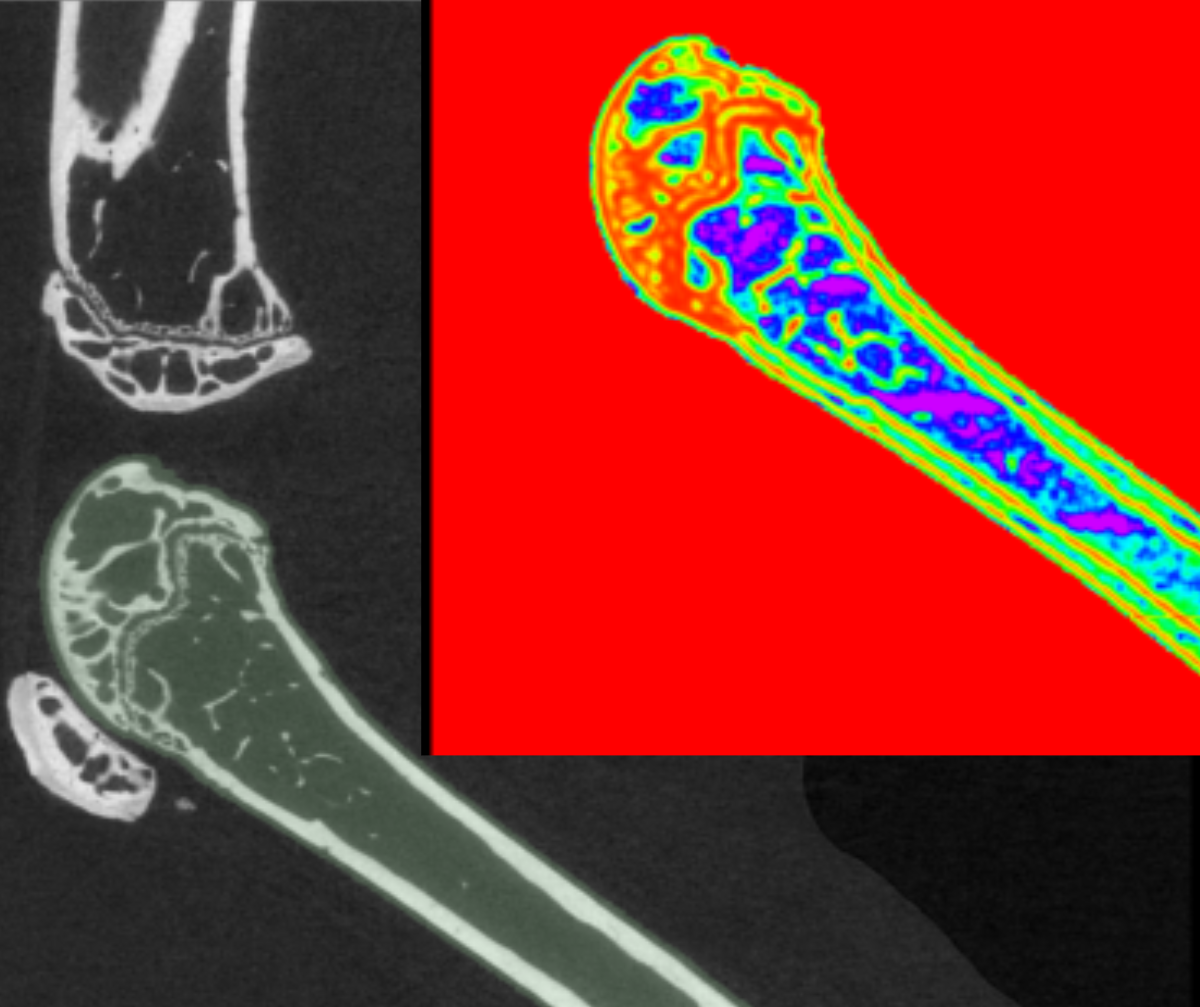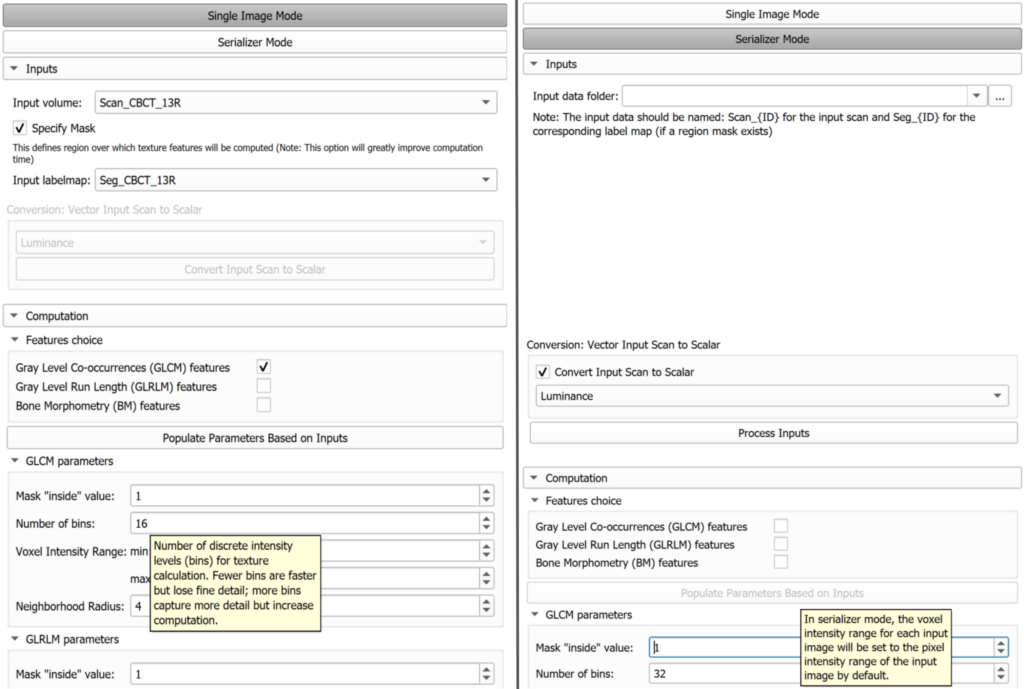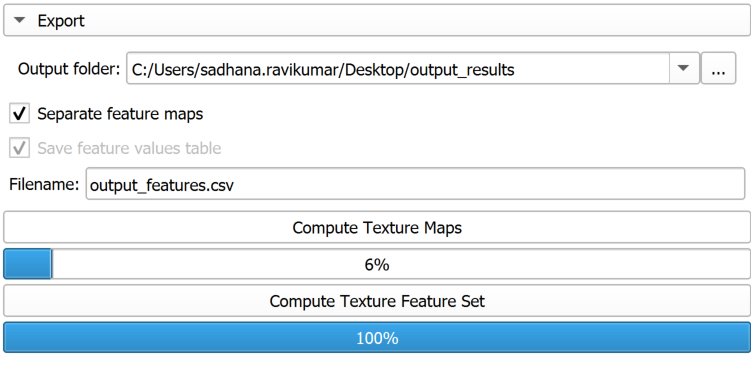Introducing the updated Bone Texture Extension for simplified image texture analysis in 3D Slicer

Introduction
Kitware is excited to announce a major update to 3D Slicer’s Bone Texture Extension, which was first introduced here. The extension uses high performance algorithms implemented in ITKTextureFeatures to enable analysis of local texture in 2-D, 3-D, and N-D images. It provides a user-friendly interface to calculate a wide range of texture features including Gray Level Co-occurrence Matrix (GLCM) features, Gray Level Run Length Matrix (GLRLM) features, and Bone Morphometry features such as percent bone volume and trabecular thickness and separation. This opens up exciting possibilities for analyzing texture patterns in various tissues and anatomical structures, expanding the scope of research and clinical applications.
What’s New?
In addition to bug fixes to support the latest version of Slicer, updates to the latest extension include new features and refinements that improve functionality and user experience. Here are some of the key highlights:
Parameter Node Integration
- The extension now adheres to the 3D Slicer parameter node standard. Parameter nodes provide a centralized and organized way to manage input and output settings. Because they allow saving the Slicer scene and UI state at any given time, this makes it easier to track and modify parameters, thus streamlining the workflow.
Simplified Workflow: Combined Single & Serialized Batch Processing
- The previously stand-alone Bone Texture Serializer module is now integrated within the main Bone Texture module.
- The updated Bone Texture module UI includes a button that allows the user to seamlessly toggle between ‘Single Image Mode’ and ‘Serializer Mode’. Serializer Mode enables batch computation of the chosen texture features across multiple input volumes after parsing the specified input directory.

Flexible Input Options
- Users now have the option to compute texture features across the whole input image. Specifying an input labelmap (mask) that defines a region over which texture features should be computed is an optional input that helps to reduce computation time.
- We have added tool tips to the input parameters, making it easier to understand how the selected parameter values influence texture results. Tool tips are visible when the mouse cursor hovers over the input parameter.
- The extension now supports double scalar type input volumes.
Enhanced Results Export and Output Options
- In Serializer Mode, the computed texture maps are saved by default to the specified output folder and output csv (when computing the feature set). A progress bar indicates the percentage of output features that have been computed.
- In Single Image Mode, once texture maps or feature sets have been computed, the results can be easily exported to file within the module.
- The user can select the option to split the computed 3D texture maps with N-D features into multiple volumes (one for each feature) and save them as separate image files. If selected, the feature name is now specified in the output file name.

Get Started
The extension can be installed directly from 3D Slicer’s Extension Manager using the latest Slicer preview release (5.9.0). https://download.slicer.org/. We encourage users to test out the updated extension and share their feedback with the community!
With the Bone Texture Extension, we have integrated Kitware-developed functionality within 3D Slicer. Contact us at kitware@kitware.com to learn more about how we can help you develop custom 3D Slicer-based plug-ins tailored to your research, processes and products.
Acknowledgements
This work was supported by the National Institute of Health (NIH) grants R21DE025306, R01DE024450 and R44DE027574.